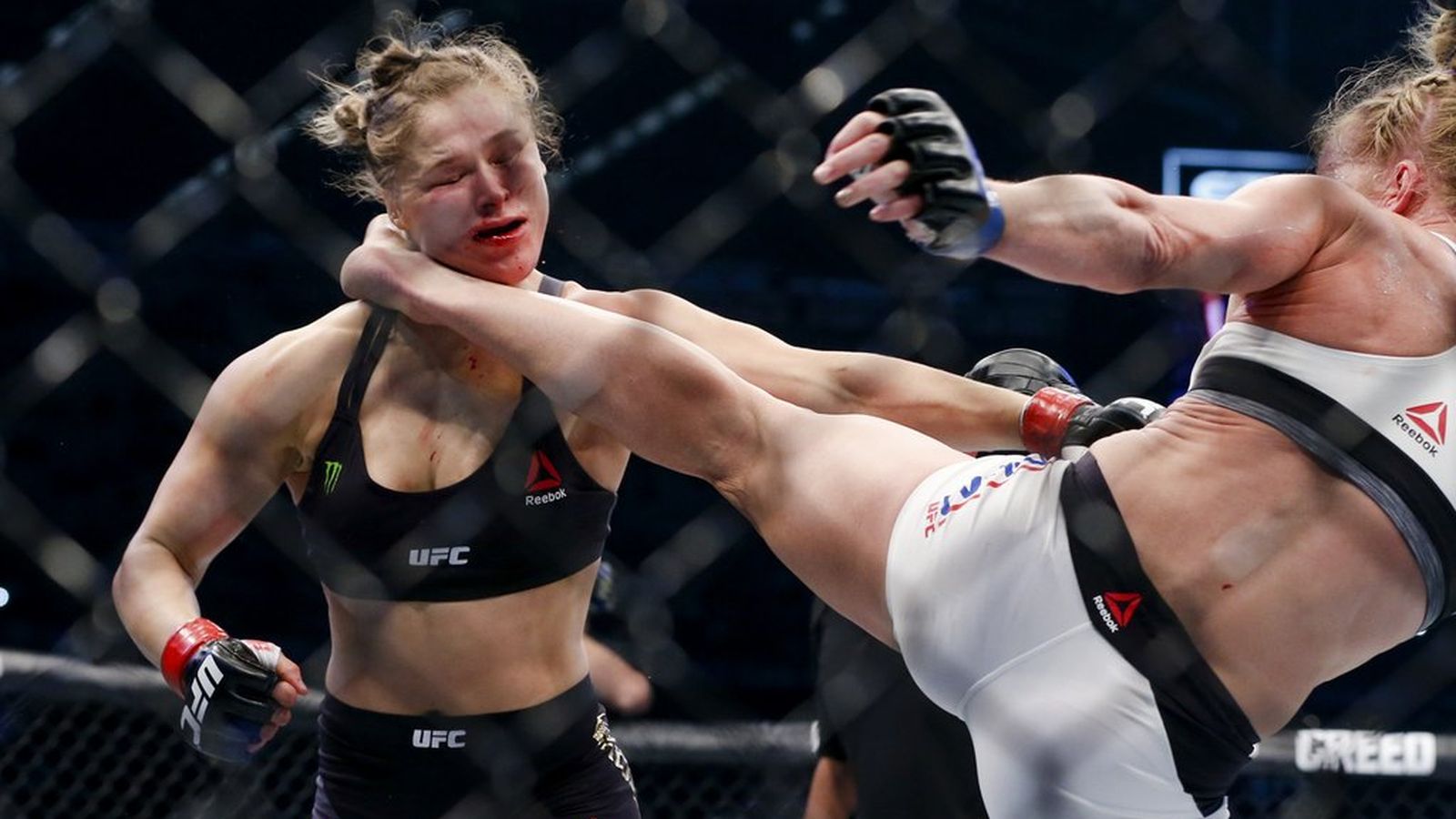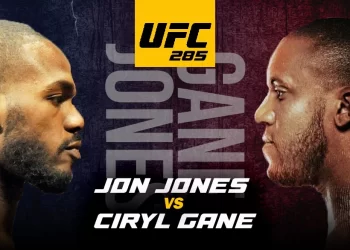By: Jeffrey Newholm
Revolutionary War buffs know all about the “shot heard ’round the world”. UFC’s answer to the patriot’s volley that ignited the war could just as aptly be called “the kick heard ’round the world”. For many, November’s matchup between undefeated and unchallenged champ Ronda Rousey and unknown challenger Holly Holm figured to be just another quick knockout for Rousey. But in the second round (most of Rousey’s fights didn’t even go that long), Holm delivered a quick and vicious blow to Rousey’s head, giving Holm one of the most shocking victories in the history of sports. Social media was set ablaze and UFC generated far more publicity from that one moment than perhaps any other in its history. But what exactly made fans so fascinated by that kick, or by UFC in general? In any other situation someone being kicked in the head would be severely reprimanded. A student who attacked another could be kicked out of school. A worker could be fired. Criminal charges could be filed. Yet for some reason when we see violence in the octagon or the big screen, we relish and celebrate it. I think that’s revealing of a very troubling trend in this county.
Now please don’t think I’m trying to pick on professional fighters or am trying to begrudge them their success. For many fighting is the only way to make a decent living. Boxing was Manny Pacquio’s only way to get his large family out of destitute poverty. Connor McGregor was looking at a lifetime career as a plumber before he devoted himself to mixed martial arts. UFC isn’t really that big of a deal in the grand scheme of things, and there are many, many other media depictions of violence I could have used as an example. I just think our fascination with one man being rewarded for brutally attacking another is the canary in the coal mine-it’s a warning that violence is an integral part of American culture. The numbers on gun violence are extremely troubling. According to Mass Shooting Tracker, there were 372 mass shootings in the US last year. Gun Violence Archive found over 13,000 Americans were murdered with guns last year and over 26,000 wounded. UNODC reports the homicide rate in the US is three times the rate in Canada. I’m not arguing that violence on TV is a direct cause of this epidemic of violence. Many factors go into a criminal’s decision to kill-it’s way too simplistic to single out one cause. Even if we knew all the reasons, that certainly wouldn’t excuse the criminal anyways. I am a strong believer in personal responsibility. But it’s undeniable that exposure to acts of violence desensitizes us to it and serves as negative observational learning for children. Research made this clear long ago.
In the 1961 “Bobo doll” experiment, children were split up into three groups. In one, children watched as a researcher attacked a toy doll (the Bobo doll). In the second group, researches interacted with the doll in a nonviolent manner. In the control group, there were no observational models. All three groups were then taken to a room with fun toys, only to be told that they were not allowed to play with them (this was to arouse an aggressive response). All three groups were then taken to a room with another Bobo doll. The children in the first group were far more likely to attack the doll, often in the same way they observed the researcher attack it. This makes intuitive sense. When children see adults get reinforced for acting in a violent way when frustrated, they think it’s okay for them as well. Clearly parents should take heed of government ratings when considering how to entertain their children. Our own Kristen Ashley reports many small children were in the theater to see Deadpool, which is rated R. She reports that it’s “a very hard R” with “lots of gore, [and] lots of explicit sex”. Was the Star Wars showing sold out? I’m also troubled by parent’s ignorance of Entertainment Software Rating Board (ESRB) ratings for video games. A video game is extremely interactive, and in many games the player is rewarded for attacking and killing others. If a game is rated M (recommended for ages 17 and older) for “intense violence, blood and gore, sexual content and/or strong language” (ESRB’s own definition) then no good parent should let a young child play it. Now of course many children play those games and watch those movies and end up just fine. Maybe you’re one of them. But not all children have the same temperament. For some, witnessing those acts of violence could plant the seed for future aggression.
But perhaps one could argue that watching violence on TV or pretending to kill in a game is actually good in that it’s cathartic. Perhaps it allows us to get our violent impulses out without being violent in real life. Alfred Hitchcock, director of horror classic Psycho, argues: “One of television’s greatest contributions is that it brought murder back into the home where it belongs. Seeing a murder on television can be good therapy. It can help work off one’s antagonism”. If everyone believed Hitchcock, we’d live like the dystopian version of the United States seen in The Purge and its sequels.

In the Purge movies, one day a year in America, all crime is legal and the police stay home. This would be sensible if the catharsis theory was true. Sure we’d have one bad night, but the other 364 days should be idyllically peaceful. Well perhaps Hitchcock’s statement made the movie-goers happy, but unfortunately it’s dead wrong. Even way back in 1972 the Surgeon General said it was wrong. There’s no excuse to say it today. Hundreds of studies conclusive prove viewing violence actually increase anger and aggression. In fact the link is almost as strong as the link between smoking and lung cancer. If you think denying that link is foolish, then for consistency’s sake we have to agree that violence is not cathartic. No, seeing violence certainly doesn’t automatically cause us to be violent. But it’s undeniable that violence in mass media is a contributing factor to our out of control gun and murder epidemic.
So how can us as sports fans help stem this alarming tide? I certainly agree that violence can make a game more exciting. A big hit in football draws great oohs and aahs from the crowd. Many hockey fans go just for the fights. It’s not sensible or realistic to call for a cold turkey solution. But I would appreciate it if parents would direct their children towards less violent sports. I think basketball is a very entertaining and fast paced game that’s quite physical. But a player has to play with skill and finesse. Two hands on an offensive player is automatically a foul. Basketball is a game that teaches kids to play and work hard without doing anything to injure the other team. In baseball you usually can’t touch another player at all or obstruction or interference would be called. And I think even football is an acceptable sport if coaches teach good tackling form and discourage big hits for the sake of big hits. But in my opinion I don’t think we should celebrate an athlete going after an opponent or a sport where someone is paid for sending someone to the hospital (Holm got choked unconscious in her last fight). Yes it entertains many. But violence is tearing this country-and this world-apart. It’s about time we found a hobby that sends the right message about acceptable human behavior.
You can follow me on Twitter @JeffreyNewholm and our blog @NutsAndBoltsSP.


 NFL
NFL





